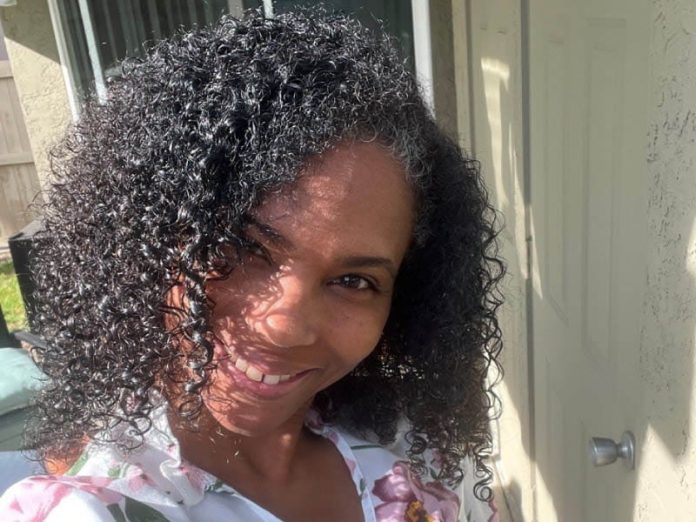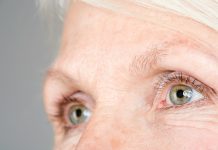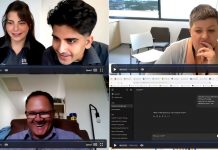
Sybil Jones knows it’s hard to say goodbye. As the wife of a supply corps officer in the U.S. Navy, Jones has packed up and moved to several cities and countries over the last 20 years.
Before her husband, Marcus Jones, relocated to a new duty station, the couple gathered with their friends at a brewery in Arlington, Virginia, to say goodbye.
During the farewell party, as Sybil sipped libations, chatted with friends and posed for photos, the scene started to shift.
The sounds of merrymaking faded, and faces became blurred. Sybil thought she had too much to drink, but the friend she was talking to knew it was more serious and rushed to find Marcus.
“I walked over and could immediately tell that she was having a stroke,” Marcus said. “My great-grandmother had a stroke (when I was 11) and she had the exact same look; it looked like the left side of her body had completely shut down.”
Marcus remained calm when he called 911 and told the dispatcher that his 43-year-old wife was experiencing a stroke. The information allowed the hospital to get protocols in place while she was on the way.
Then, he called home to tell his daughters, then ages 16, 14 and 12, that their mom was being rushed to the hospital and a co-worker was on the way to stay with them.
An MRI showed a clot deep in the right side of Sybil’s brain. She received clot-busting medicine, but it failed to dissolve the clot.
Sybil needed a thrombectomy, a procedure in which doctors can use a catheter to get inside the brain and essentially pluck out the clot. However, this hospital didn’t offer that.
She was transferred by ambulance to a nearby hospital with a comprehensive stroke center.
Before the procedure, Marcus recalls a doctor saying, “If this is successful, it’ll be like she never had a stroke. But, if we do nothing, this will be her new normal.”
The doctor also said there was a small chance of complications that could be fatal.
“Go ahead,” Marcus said. Then he said a prayer.
Sybil remembers waking up from anesthesia, hearing voices and feeling an intense pressure in her groin – the site of the incision for the catheter. She called it her “worst nightmare.” But the challenges were just beginning.
After a week in the intensive care unit, doctors determined that the stroke was caused by a carotid web, a rare vascular disease that Sybil didn’t know she had.
It causes a strand of tissue to form in the artery, which then causes the artery to narrow, all of which increases the risk of blood clots.
In May 2021, a few weeks after her stroke, doctors placed a stent in her right carotid artery to remove the web and keep the artery open. Sybil calls it her “snazzy neck jewelry.”
Sybil spent a week in the hospital as doctors struggled to control her blood pressure.
Instead of boarding a plane for their new home in San Diego, Marcus took a 60-day leave from work to focus on helping his wife recover; family and friends helped with caring for their children.
The stroke left Sybil weak on her left side, lacking a hot-cold sensation and with a slight slur of speech. She worked with a team of speech, occupational and physical therapists to overcome them.
She found therapy “humbling.” She struggled with the emotional toll of relearning basic skills like driving, grocery shopping and using a knife to prepare lunch for her kids.
During her first trip to the grocery store after her stroke, Sybil got to the cash register and couldn’t remember how to pay.
“I don’t know if it was the anxiety or what, but I stood there and stared at the cashier and I told her, ‘I had a stroke. Please be patient with me,'” Sybil said. “I wasn’t just relearning; I was relearning with a left side deficit.”
Sybil still struggles to focus, especially when it comes to multitasking or focusing amid distractions. She also has had to overcome depression and anxiety.
While grateful for the support she received from family and friends, Sybil longed to connect with others who understood the stroke recovery journey.
She was especially eager to connect with others in the African American community, who have a disproportionately higher risk of stroke.
She recently launched Stroke Talks, a website that promotes stroke awareness and hosts virtual meetups for stroke warriors.
She’ll soon be connecting with stroke survivors from overseas. After two years in San Diego, Marcus accepted a new duty posted in the Middle East country of Bahrain.
Before boarding the plane, Sybil researched everything from the food and the culture to the medical system. And she’s grateful the farewell party was a lot less memorable.
Written by Jodi Helmer.
If you care about stroke, please read studies about Shingles vaccine may be a shield against heart attacks and strokes and findings of new links between cholesterol levels and stroke risk.
For more information about stroke and health, please read studies about a breakfast linked to better blood vessel health, and olive oil could help lower risks of heart disease and stroke.
Follow us on Twitter for more articles about this topic.



